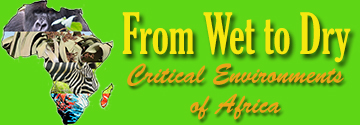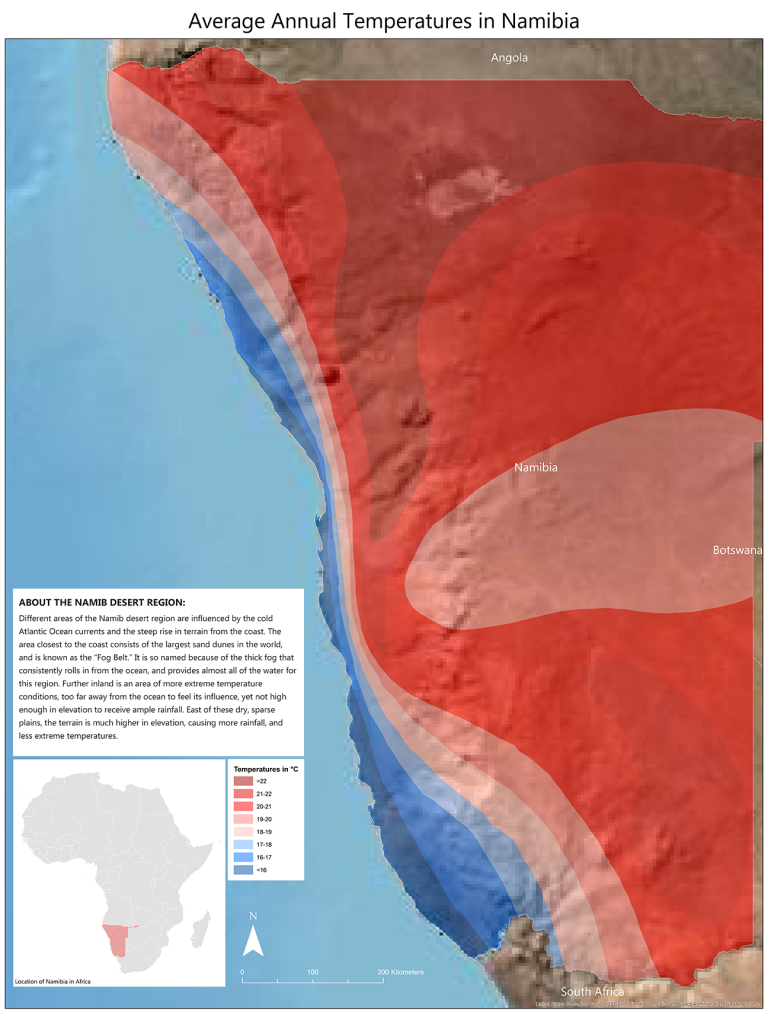The Namib Desert region has a surprisingly wide array of life for being one of the oldest and driest places on Earth. Many of the species that live here are endemic, found nowhere else. One fascinating example is that of the plant Welwitschia. This strange plant can live for over 2000 years, and it only grows two leaves during its entire life. Because of the windy environment it lives in, its two leaves become shredded over the years, giving the appearance of a nest of many leaves. This plant is featured on the Namibian coat of arms, signifying Namibia’s unique desert environment.
There are different areas of this desert region, influenced to different degrees by the cold Atlantic Ocean currents. These changes in region are further affected by the steep rise in terrain east from the coast. The Great Escarpment, which continues into South Africa. The area closest to the coast is known as the “Fog Belt,” so named because of the thick fog that consistently rolls in from the ocean. This is caused by the difference in temperature between the chilly ocean current and the warm desert sand. The moisture from the fog provides almost all of the water for this region, where rainfall is extremely scarce. The landscape of this area is mostly large sand dunes. In fact, the dunes found along the Namibian coast are the largest in the world. Further inland is an area of more extreme temperature conditions, where it is far enough away from the ocean to not be influenced, yet it is not far enough inland (nor high enough in elevation) to receive the relatively ample rainfall. The temperatures here are what a typical desert is thought of as having – hot days, cold nights, and minimal precipitation (though still more than the precipitation in the Fog Belt). The landscape of this area is like that of dry, sparse plains. East of this area, where the terrain is much higher in elevation, the rainfall is greater because of that, and the temperatures are not quite as extreme.




